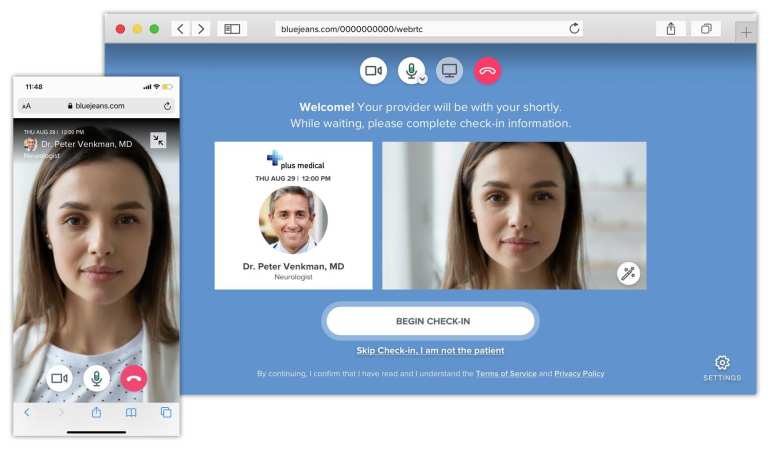
In the 15 months since Verizon announced its half-billion dollar purchase of teleconferencing Zoom competitor BlueJeans the embrace and use of this alternative to in-person meetings has fundamentally changed and exponentially grown, be it for business, fun or more serious endeavors like medical appointments.
In a PYMNTS interview with Karen Webster, BlueJeans Vice President and General Manager Eric Spadafora said the service has evolved from being intermittent and inconsistent to reliable and essential.
“One hundred percent of people are now comfortable with video, and 100 percent of people here in the states have smart phones, he said. “Video’s here to stay. We are competing in that space as a challenger brand nested inside of a global brand, and our whole strategy around that is being able to build purpose-built solutions on the platform, of which telehealth is the first.”
Because most people are already on board with the technology, Spadafora told Webster that it becomes easier for BlueJeans to proceed to phase two and construct purpose-built solutions for specific new verticals.
Solving The Problems At Scale
Spadafora said he doesn’t love the phrase telehealth, as it sounds dated and is a bit misleading. Virtual care or remote care might be better terms, but that is something he is content to leave to the “marketeers” to decide.
More important than what we call it is what it does and can do, which is democratize access to the healthcare system, he said. Since many patients are unable to hop in their car or leave their job midday to go to an appointment with a doctor that speaks their language, remote care can bridge those gaps — and more — which is exactly what BlueJeans is pursuing.
“We want to democratize this in a way and put it in people’s hands, so as you have internet, you don’t need an app, you don’t have to have a Gmail account or a provider network — with the web, you can access a medical professional,” Spadafora explained.
What the pandemic did is force the existing physical accessibility problem some patients already face in medicine onto the population at large, he said. It also “raised the elevation” of virtual care by highlighting the fact that talking to a medical professional in real time via video can quickly, easily and effectively solve a lot of problems.
Enhancing The Experience
What connected health can do today is build bridges and fix historical gaps in the system. What it will be able to do in a world connected by 5G and fiber-based infrastructures that are able to do things like process images in real time is where the capabilities of the digital delivery of healthcare becomes really exciting, he said.
“When you’re getting the benefits of [artificial intelligence (AI)] and [machine learning (ML)] technology woven into the fabric of that encounter, it should provide the practitioner better data sets to work from over time,” Spadafora said.
Doctors won’t have to rely on their memory of what a patient looked like when last they saw them as they can refer to a video record instead, or even have tech solutions that automatically elevate nuances that the human eye might not be able to detect.
Clearly some of those developments are years down the road and will require auxiliary advances before they become an actualized part of the medical experience that is coalesced and interactive for providers and patients alike.
Getting to that next level isn’t going to be easy work; there’s always the risk of a “good-enough” mentality taking over when it comes to remote healthcare services, given practitioners’ preference to get patients back into office. It’s an attitude he said he believes is slowly but ultimately diminishing.
But he noted, from the feedback BlueJeans has gotten so far, patients and providers are by and large embracing the change and excited about what will come to the market next and how digital tools can be better leveraged to elevate and upgrade their clinical experiences.
“Honestly, I’m excited about it,” he said. “We’re at the point where video is here to stay, and we’ve got a platform that we’re going to enable for multiple industries, starting with healthcare, to benefit today.”